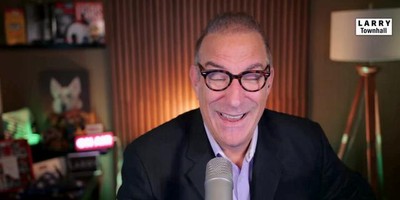WASHINGTON -- Throughout his two terms in the White House, Barack Obama has either exaggerated or covered up his failed record on the economy.
Soon after taking office in the midst of a deep recession, he said the only way to grow our economy was to blow $1 trillion on government infrastructure projects across the country and fatten the budgets of a lengthy list of federal bureaucracies here in Washington.
He raised taxes, created a sea of costly regulations on struggling businesses and employers, and made excuses when the economy continued to limp along year after year -- blaming the Bush administration, Wall Street fat cats, the Republicans in Congress and even the weather.
In the end, he managed to establish a new record: one of the longest, slowest, weakest economic recoveries in decades.
Nearly eight years later, the underperforming Obama economy was growing -- "crawling" would be a more accurate term -- by little more than 1 percent in the second quarter (1.2 percent), after barely rising by 0.8 percent in the first three months of this year.
That sparked fears of another recession and a sell-off on Wall Street. "We're just muddling through," moaned Joseph LaVorgna, chief U.S. economist at Deutsche Bank Securities in New York.
Throughout Obama's presidency, Democratic leaders in Congress never uttered a word of complaint about the economy's troubles; or if they did, they blamed them on anything but the administration's growth-impeding, job-killing policies.
Obama, too, kept dealing from the bottom of the deck, pointing to the Bureau of Labor Statistics' numbers that showed the unemployment rate had plunged to 5 percent. But this jobless figure is a fraud. It is derived from a nationwide survey, but the numbers are cooked, massaged, refigured and, well, leave a lot of people out of the final count.
Recommended
Who says so? The respected Gallup Poll that conducts daily unemployment surveys -- and they don't mince words about the government's phony numbers.
"Widely reported (government) unemployment metrics in the U.S. do not accurately represent the reality of joblessness in America," Gallup reported last week. "For example," the BLS "does not count a person who desires work as unemployed if he or she is not working and has stopped looking for work over the past four weeks.
"Similarly, the BLS does not count someone as unemployed if he or she is, for instance, an out-of-work engineer, construction worker or retail manager who performs a minimum of one hour of work a week and receives at least $20 in compensation," Gallup says.
Gallup defines "a good job" as someone working 30 or more hours a week and receiving a regular paycheck. When it applies that measurement, its surveys find that the nation's "real unemployment" rate is nearly 10 percent (9.7 percent).
The economy is beset by other troubles, too. Business and private investment fell 3.2 percent in the last three months, the highest in seven years. New business start-ups, a pillar in job creation, have been weak throughout Obama's presidency, another troubling sign of deep, anti-risk-taking uncertainty that has plagued his administration.
This is a critical time that cries out for a new birth of capital investment, the lifeblood of a dynamic, entrepreneurial economy. Right now, the two major presidential candidates offer two diametrically opposite agendas: One would jump-start the economy; the other would kill what little life is left in it.
Hillary Clinton is calling for tax increases, especially on investment capital, falsely maintaining that the wealthy are "not paying their fair share."
According to the Tax Foundation, a think tank that advocates lower tax rates, the top 10 percent of taxpayers pay over 70 percent of all federal income taxes, based on IRS figures.
Clinton has embraced Obama's failed fiscal policies that call for major tax increases on investors, which would further undermine our economy. She should know better because Bill Clinton, in his second term as president, signed a Republican bill that reduced the capital gains tax, which that led to an explosion in economic growth, new high-tech businesses and higher-paying jobs.
Donald Trump, however, has proposed a sweeping tax reform plan that would simplify the tax code and lower the tax rates on business and individuals. It would immediately stimulate and expand the economy, unlock new business investment and create a wave of new jobs.
He has already made clear that he would work closely with Republican leaders in Congress, especially with Paul Ryan, the speaker of the House, where all tax revenue bills must originate.
That's right, the very same Republicans that he and his followers have branded the "establishment" and whom they want nothing to do with. But the House GOP reform plan's tax rates are not much different than Trump's, calling for three tax brackets of 12 percent, 25 percent and 33 percent.
Trump wants a 15 percent corporate tax rate. Ryan's is set at 20 percent. But Trump's tax cut plan excludes a critical ingredient: broadening the tax base by getting rid of corporate welfare and other preferential tax exemptions to make the reform plan revenue neutral. Ryan's plan does that.
That means making compromises, something Trump is willing to do, but don't tell that to his supporters.
All of this, of course, is in the realm of political conjecture. The bombastic real estate mogul has so many crippling negatives of his own making that a Trump presidency still remains the longest of long-shots.
























Join the conversation as a VIP Member